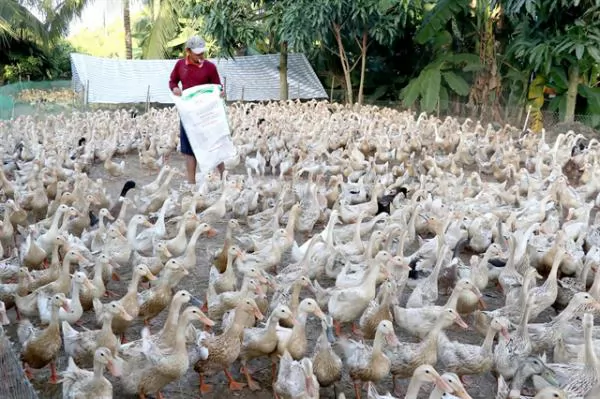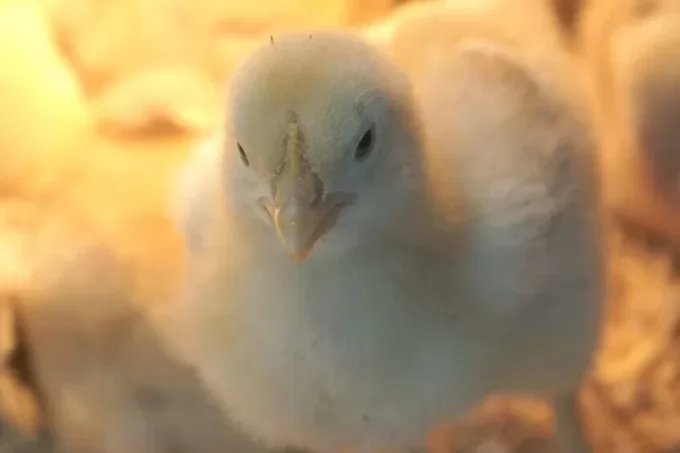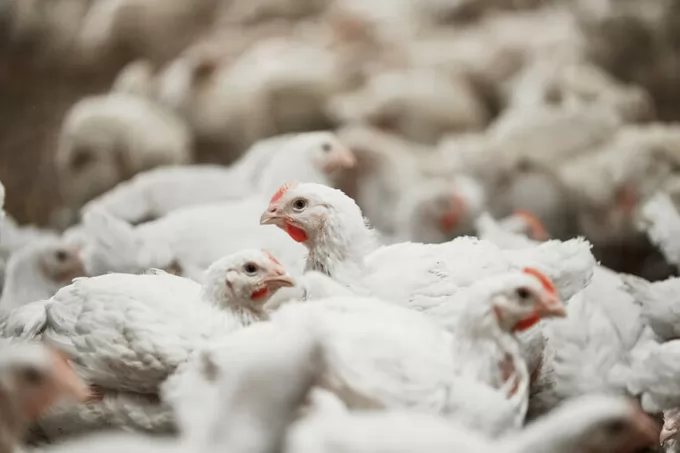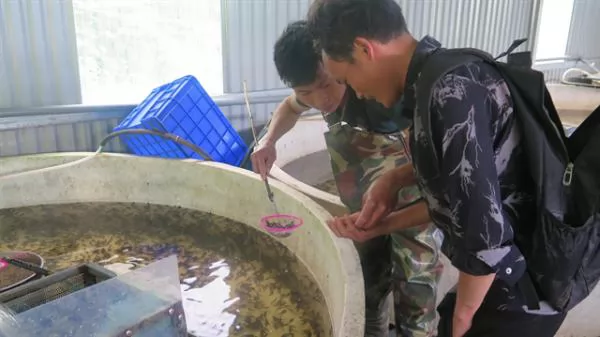Đồng Tháp to develop duck breeding

Ducks are bred for harvesting eggs in Đồng Tháp Province's Thanh Bình District. — VNA/VNS Photo Nguyễn Văn Trí
The Cửu Long (Mekong) province of Đồng Tháp is seeking to develop large-scale duck breeding from now to 2025.
ĐỒNG THÁP — The Cửu Long (Mekong Delta) province of Đồng Tháp is seeking to develop large-scale duck breeding from now to 2025.
Huỳnh Minh Tuấn, deputy chairman of the provincial People’s Committee, said the province will reduce small-scale and free-range breeding.
The province will re-organise the activities of duck breeding co-operatives so they can operate more effectively, he said.
More new duck breeding co-operatives will also be established, he said.
The province will develop linkages among farmers and companies to breed ducks and produce duck-related products for sustainable development and to increase value, he said.
Đồng Tháp, which is the delta’s largest duck producer, has more than 6.9 million ducks for harvesting eggs and meat this year.
The provincial People’s Committee plans to achieve a production value growth of 5 per cent a year for duck breeding in 2022-25.
It aims to breed a total of 8.8 million ducks in 2025, with an output of 9.5 million tonnes of meat and 390 million eggs.
About 90 per cent of the province’s ducks are bred under the linkages among stakeholders to guarantee demand and income for farmers, and 15 per cent of the province’s ducks will be bred under advanced farming techniques by 2025.
In 2022-25, each year the province aims to have at least one start-up project that manufactures duck-related products from meat and eggs.
The province will develop OCOP products from ducks under the country’s “One Commune-One Product” (OCOP) programme to increase duck value.
To meet the targets, the province will zone duck breeding areas, improve duck yields and the quality of ducklings, strengthen monitoring disease and implement agricultural extension activities, according to its People’s Committee.
It will develop concentrated duck breeding areas in Tháp Mười, Cao Lãnh, Tam Nông, Thanh Bình and Tân Hồng districts and nearby localities.
It will boost the co-operation among the Ministry of Agriculture and Rural Development’s relevant units, the province’s relevant departments and the Tháp Mười District People’s Committee to soon establish a high quality animal breed production centre in Tháp Mười.
It will also tighten inspecting animal health and diseases to ensure the reproduction of disease-free ducklings for breeding in the province.
Duck is one of six key agricultural products under the province’s agricultural restructuring plan.
The province has strengthened trade promotion activities for duck products and co-operated with large cities such as HCM City and Hà Nội to sell duck products.
It has bred ducks under various models such as free-range breeding, farm breeding, duck-rice farming and duck-fish-rice farming.
Nguyễn Văn Vương in Tam Nông District farms rice, fish and ducks at the same time in a 10ha rice field.
The profit of cultivating duck, fish and rice is three times higher than growing only rice, he said.
He grows two rice crops a year and breeds ducks and fish year round.
The duck-fish-rice farming model produces clean products as it does not use pesticides for growing rice.
Ducks and fish eat rice pests such as brown plants hoppers and snails in the field, and their waste fertilises rice, helping to reduce the cost of fertiliser for rice cultivation by half, Vương said.
He farms 1,500 ducks in the field and earns a profit of VNĐ20 million (US$840) from selling the ducks after two and a half months of breeding, he said.
He breeds fish such as snakehead fish, bighead catfish and snakeskin gourami as they have high value and stable prices, earning a profit of VNĐ120-160 million ($5,000-6,700) a year, he said.
Lưu Văn Tiến, deputy head of the Tam Nông Bureau of Agriculture and Rural Development, said the duck-fish-rice farming model is becoming more popular because it has high production efficiency and is sustainable.
Tam Nông, Tháp Mười, Cao Lãnh and Thanh Bình are the province’s largest duck breeding districts.
The province has chosen Tam Nông and Tháp Mười for developing duck egg production. The two districts breed mostly the cổ cò duck variety which is bred mostly for producing eggs.
Tháp Mười has developed duck breeding for commerce and export.
The district has encouraged farmers to breed ducks under quality standards, to secure food safety and manage diseases.
The district has more than 73,000 ducks bred under biosafety standards. It has three co-operative groups that breed nearly 100,000 ducks. — VNS
Maybe you are interested

More performance with reduced protein!
Despite protein reduced poultry feed - better performance parameters and less burden for the environment!

Practical application of matrix values for enzymes
In recent years we have seen severe financial pressures on animal production operations coming from multiple sources, with increasing feed costs being one of the major factors.

Lào Cai enhances cold-water fish production
LÀO CAI — Many farms in the northern mountainous province of Lào Cai have implemented measures to enhance the production and trade of cold-water fish.





